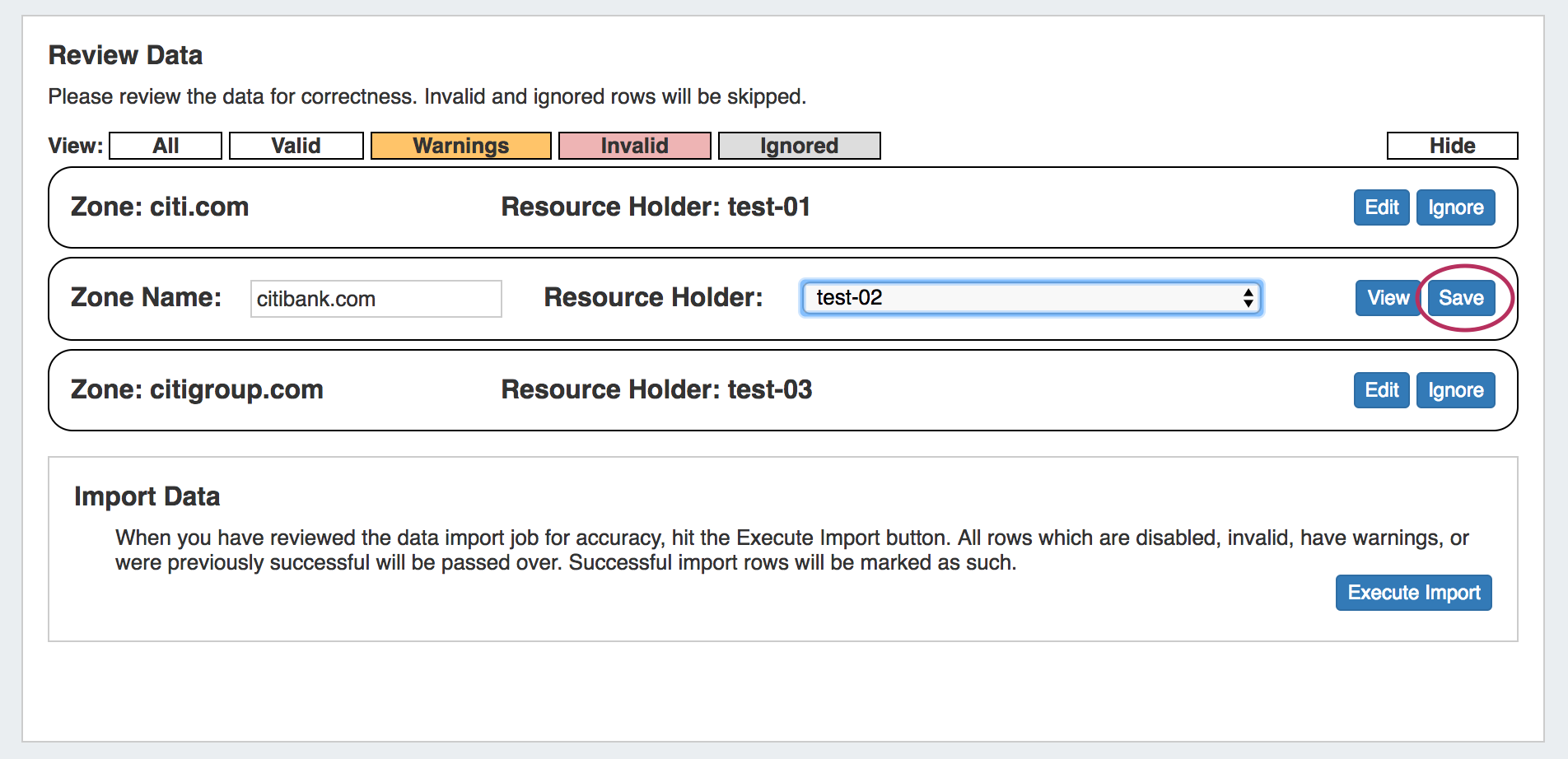| HTML |
|---|
<div id="google_translate_element"></div>
<script type="text/javascript">
function googleTranslateElementInit() {
new google.translate.TranslateElement({pageLanguage: 'en'}, 'google_translate_element');
}
</script>
<script type="text/javascript" src="//translate.google.com/translate_a/element.js?cb=googleTranslateElementInit"></script> |
BIND DNS Zone Import
The BIND DNS Zone Upload / Import tool uses the named.conf configuration file tied to the zones you are uploading, a .zip or .tar file of the zones themselves, and an optional .csv file mapping zones to customers. The following steps are used when importing BIND DNS zones:
...
There are three components for the upload process:
1) The named.conf configuration file tied to the zones you are uploading (required)
...
For a sample Simple Config: conf.conf
2) A ZIP or TAR file of the DNS zones themselves (required)
...
For a sample simple ZIP: zones.zip
3) Match CSV for assigning DNS Zones to Resources (optional)
...
Select the appropriate Configuration File (required if the .zip is not a flat archive file), Archive File (required), and CSV File (optional) that you prepared above by selecting the "Choose File" button(s) under each section, and browsing to the correct file location. Then hit "Start Import".
| Note | ||
|---|---|---|
| ||
Although you cannot add new files to an existing job, for jobs with multiple sources for data (which may have different formatting), you can simply create separate jobs and descriptions for each source - no need to manually combine the data into one file before importing. The Import tool's mapping and editing functions will allow for the data to be reconciled in ProVision. For large data sets where multiple stages of manual review might be needed, you can create a new job using the same set of data files in order to work in parallel on a different portion of the data. |
...
After importing, the new job will appear under the "Existing Jobs" section. To continue working with this job, select it from the list and the next step will appear on the page.
...
After editing, hit "Save", and continue reviewing / editing data as desired.
Step 4: Execute Import
When the review step is completed, hit the "Execute Import" button. A progress bar will appear to show progress and note errors if they occur.
...
When the bar reaches 100%, the import is complete.


